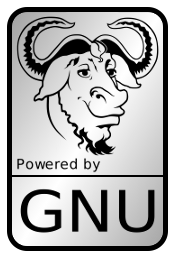History of free and open source
In the 1980s software used to be shared via BBS systems and it was common for source code to be distributed freely, it encouraged hacker culture which is the basis of free and open source philosophy.But as researchers were starting software companies, selling licenses for software became the key to their business models. NDAs and proprietary software licenses became the norms, Richard Stallman saw this culture threatened, and advocated that software should not have owners.
Then he decided to create a complete operating system that would not deprive users of the freedom to understand how it worked, and would allow them to make changes if they wished. so he launched the GNU Project in 1983,which spurred the free software movement, and is the basis for the open source movement. It is thanks to this groundwork that "open source" and its accompanying principles were established in 1998.The goal of the GNU project was to clone the Unix operating system to create a system that would give complete freedom to users.

In January 1984 he created the first compiler system the GCC. Then in Early in 1985, he published "The GNU Manifesto," which was a call to arms for programmers to join the effort, and launched the Free Software Foundation in order to accept donations to support the work. This document is the founding charter of the free software movement.
The Release of the GNU License
Until 1989, software written and released by the Free Software Foundation and RMS did not have a single license however, after a company called Unipress forced Stallman to stop distributing copies of an Emacs implementation they had acquired from James Gosling,he felt that a license to secure user freedoms was important. Then first version of the GNU General Public License was released in 1989, which encapsulated the values of copyleft(not copyright). You may use, copy, distribute, and modify the software covered by the license, but if you make changes, you must share the modified source code alongside the modified binaries. This simple requirement is what enabled the decentralized, collaborative development model of the free software movement to flourish.

World's First OS
In the early 1990s the free software community received the first complete free operating system with Linus Torvald’s kernel combined to GNU operating system. Debian, founded by Ian Murdock in 1993, committed to the GNU and FSF principles of free software. Linux adoption by businesses and governments began in the late 1990s. Website-based companies emerged and made extensive use of free web servers, especially the Apache HTTP Server. The LAMP (Linux, Apache, MySQL, PHP) stack gained popularity over expensive proprietary solutions.

Cathedral Bazaar
In 1997, Eric S. Raymond published the seminal essay, "The Cathedral and the Bazaar," comparing and contrasting the development methodologies and social structure of GCC and the Linux kernel and talking about his own experiences with a "bazaar" development model with the Fetchmail project. Many of the principles that Raymond describes in this essay will later become central to agile development and the DevOps movement—"release early, release often," refactoring of code, and treating users as co-developers are all fundamental to modern software development.

This essay has been credited with bringing free software to a broader audience, and with convincing executives at software companies at the time that releasing their software under a free software license was the right thing to do. Raymond went on to be instrumental in the coining of the term "open source" and the creation of the Open Source Institute.
"The Cathedral and the Bazaar" was credited as a key document in the 1998 release of the source code for the Netscape web browser Mozilla. At the time, this was the first major release of an existing, widely used piece of desktop software as free software, which brought it further into the public eye.
“Open source” is born
Up until this point, free software was not widely adopted commercially. Plagued by politics and associated with the GPL which many considered far too liberal, the movement was unpopular with corporations, who often viewed free software as a threat to their own products.
Ahead of the release of Netscape Communicator’s source code, a strategy session was held in Palo Alto with some of the major influencers of the free software movement, including Linus Torvalds, Tim O’Reilly, James Zawinski, and others. To capitalize on the attention and momentum from the Navigator news, they rebranded “free software” as “open source,” to distance from the political associations of the free software movement, and bring the principles of free software to the commercial software industry.

Richard Stallman rejected the term, preferring “free software” and its associated message of social values and users’ freedom, resulting in division among the free and open source community over which terminology they identify with. Free and open source software (FOSS) encompasses both terms.
In February 1998 , to evangelize open source Raymond founded the Open Source Initiative, citing “higher quality, better reliability, greater flexibility, lower cost, and an end to predatory vendor lock-in” as some of the primary reasons to advocate for open source.
Commercialisation of open source
Commercial companies did not welcome open source at first. In the late 1990s, a series of high-profile events led to a huge increase in the professionalization of free and open source software. Among these, the highest-profile events were the IPOs of VA Linux and Red Hat in 1999. Both companies had massive gains in share price on their opening days as publicly traded companies, proving that open source was now going commercial and mainstream.
